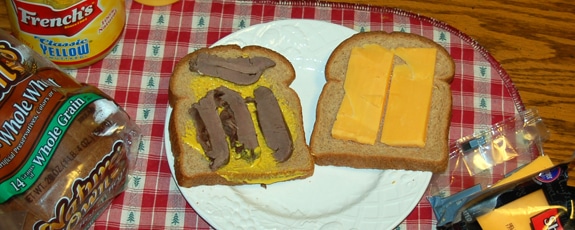As someone who depends on venison for all my wife Elaine’s and my red meat needs for the year, and who tries to annually kill 10 whitetails to fulfill those needs, I regard the consumption of venison as part of a healthy, active lifestyle. My spouse and I also write a venison cooking column forWhitetail Times, the official publication of the Virginia Deer Hunters Association, so we are always looking for new and creative ways to prepare venison.
I would even speculate that we probably dine on a venison dish of some kind well over 300 days a year. So it might surprise some venison aficionados that my favorite part of a deer to consume is not the top or bottom loins or even the roasts, steaks, or burgers, but a part of the deer that many hunters leave behind in the field – the heart, which Elaine and I regard as a delicacy.
A decade or so ago, I began to feel guilty about all the organs abandoned in the woods after the field-dressing had been completed. My spouse and I talked to other hunters, conducted some research on the Internet, and decided that the heart would be our first culinary project from among the various organs. From our inquiries, Elaine and I found that deer hearts are most often fried with onions. For health reasons, we generally avoid frying any food, but in this case, we found fried deer heart a little too tough for our taste and also that the onions and other ingredients obscured the flavor of the meat.
Elaine then decided to crockpot the heart with a can of Campbell’s Cream of Mushroom Soup. The result was incredibly scrumptious and is the manner which we have dined on this organ ever since.
All we do to cook the heart is simmer it in a crockpot for five or so hours. Elaine prefers to put mushroom soup in with the heart, and I favor just plain water. After cooking and then chilling the organ overnight, we slice it thin, slather mustard on whole wheat bread, and add some sharp cheddar cheese. An average size heart can produce enough meat for four or five lunches.
Cooked in this manner, the heart boasts a delicate – even slightly sweet – flavor that is nutritious as well as tasty. The mustard and sharp cheddar enhance the flavor instead of overwhelming it.
It’s simple to save and prepare a deer heart. When field-dressing your deer, cut the heart free and remove the heavy membrane that surrounds it. Cut away the vessels that enter the heart at its top, and trim off any fat. Give the heart a squeeze to eject any blood that remains inside, and rinse it in cool water if possible. The whole process is easy and quick.
After the scrumptious success of this recipe, we next turned to cooking the liver, albeit with extremely disappointing results. We first tried the classic liver and onions. The entrée smelled enticing on the stovetop, the first bite tasted fine, the second not so much, and by the third we decided we could not finish our meal. The overpowering flavor of a deer’s liver was just too much for us.
We then tried baking a liver loaf in the oven and disliked that dish even more than the previous one. After just one bite, we were finished eating. We gave the rest of the loaf to a friend who after trying the dish told us that he likewise was only able to swallow (barely) one bite.
With our having lost the courage to continue testing out liver entrees, I began giving deer livers to an elderly lady whose land I hunt on. After one such gift, the lady called me and said that she was very grateful that I had included the gall bladder with a recent liver delivery and that she and her husband had thoroughly enjoyed it as part of their liver and onions meal. However, deer do not possess a gall bladder, so I am very curious about exactly what the lady and her husband did dine on?
Looking for Suggestions
Elaine and I are very open to experimenting with recipes for cooking a whitetail’s heart, lungs, kidneys, and perhaps we would even give the liver another chance. Historically, pioneers regarded buffalo tongue as a culinary delight, so we recently tried crockpotting a deer tongue but found it very tough. Only later did we realize that we should have removed the skin of a tongue after cooking it – a rookie mistake for sure.
So, folks, comment below on your favorite deer organ recipes.
Editor’s Note: For hunters in areas where chronic wasting disease (CWD) is present in deer or elk, experts recommend you not eat the brain, spinal cord, eyes, spleen, tonsils and lymph nodes of harvested animals. We know you’re disappointed, but put down that fork. And in any region, it is not a good idea to eat any part of a deer that appears to be sick or suffering visible effects from an infection.
About the Author: Bruce Ingram is a QDMA member and freelance outdoor writer from Fincastle, Virginia, and he is a regular contributor to QDMA’s Quality Whitetails magazine. Bruce writes a weekly blog titled Bruce Ingram Outdoors.

